|
|
|
Pictorial Analysis by:Athena Schina, Critic & Art Historian, 2003 |
|
 |
Jahan Inanloo |
|
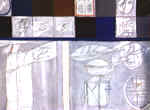 |
Achille Perilli
Achille looks to the tradition of abstract modern art, ending up questioning or even rejecting it with his "geometric non-shapes" and his theory of the "geometrically incongruous". Color parts of his paintings refer to the fundamental idea of the removal of the represented.
|
|
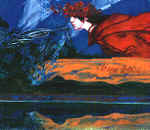 |
Armando de Stefano
Through neo-realist renegotiation of his subjects, Armando presents the familiar as the unfamiliar. The painting of Naples tradition runs through his works, in which one can distinguish themes, colors and motifs imbued with heroic humanism that is inspired by baroque iconography.
|
|
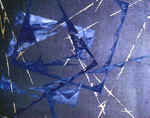 |
Eduaro Palumbo
With brisk strokes of brush, abstract drawing and multi-dimensional geometric shapes with many levels, as though they are producing and defining each other at the same time, Eduardo weaves meshes of balances and rhythms, creating powerful and fluctuating intensities that intimate at value systems and allegories.
|
|
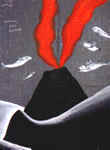 |
Ernesto Tatafiore
Most of Ernesto's works are inspired by Vesuvius, which he transforms into a symbol for various events. For this artist, the art of representation is poetry. Rhythms, shapes and colors are organically blended within metaphysical parameters.
|
|
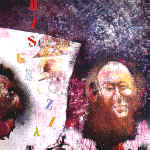 |
Gianni Pisani
Gianni uses advertising in a subjective and autobiographical way. He engages in a dialogue with old myths and rituals, creating new forms of experimentation whilst at the same time ridiculing the insignias of the modern era.
|
|
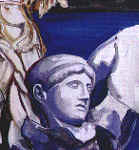 |
Giorgio Oikonomy
Giorgio was born and raised in Greece, until he left for studies in Italy, where he finally settled. His representational painting is filled with diverse symbolism that creates bridges between past and present. While painting, he is inspired by nature and, above all, antiquity.
|
|
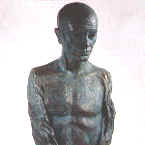 |
Lello Esposito
Lello's sculptures and paintings are inspired by poetry and the movies, but above all by the atmosphere of Naples. His figures bear the echoes of urban malaise and social oppression imprinted on them, yet they also feature the dimension of redemption through transformation.
|
|
|
Maurizio Valenzi
Maurizio has played an important role in the development of Italian and international art in 2oth century, Designer and Painter, he was one of the politicized artists, in the broadest meaning of the term. Narrative description and symbolism, in a humanist version, play definitive role in his works.
|
|
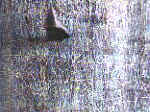 |
Mimmo Paladino
Mimmo creates sculptures as well as "environmental installations", using symbols and allegories that intimate at archetypal situations and the processed memories of the collective subconscious. His abstract works, full of imposing strength, are characterized by a quality connected to life and the transcendental.
|
|
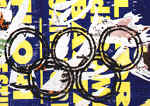 |
Mimmo Rotella
Mimmo processes iconic symbols with his own personal, yet now international, language. A follower of the "non-representational", he pursues the art of poster decollate, complementing it with an existentialist dimension.
|
|
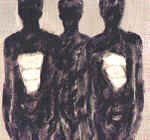 |
Nino Longobardi
Nino uses mixed materials, both in his painting and in his sculpture. His producing surfaces break up the classical balances, projecting the strength and inner intensity of materialism. His works are austere and unadorned, producing dramatic atmosphere, without wanton internalization.
|
|
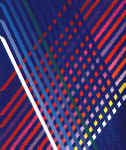 |
Piero Dorazio
Previously a member of "Ariele" art circle, Piero took part along with many other artists in "Social Arts" exhibition, later singing the Formalism Manifesto, against Italian provincialism of the period. In addition to painting, he is a set designer and art critic. The primary features of his abstract works are the rhythm and color juxtaposition.
|
|
|
Renato Barisani (Sculptor & Painter)
Renato uses mix materials, being interested in the limits of fields of color. Through neo-Dadaist idiom and geometric abstraction, he creates multi-layered surfaces, opening a dialogue between natural and artificial world.
|
|
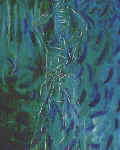 |
Riccardo Dalisi
His works are filled with creative imagination and poetic spirit. A memory of the poetics of Miro is apparent, as is the fairytale-like atmosphere that emerges through childlike "Naivety". The changes from the smaller to the larger scale transform the familiar into the incomprehensible.
|
|
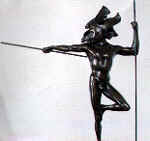 |
Ugo Attardi
Ugo draws using classical analogies and light undertones, giving volume to the human body, which he places at the center of his field of vision, as well as at the borderline between the past and the present. The body appears as the legacy of a classicism that never died out, remaining alive. Ugo works with painting, sculpture and ceramic.
|
|
|
|
